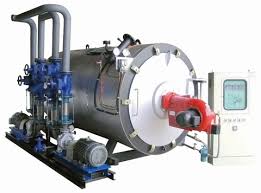
1월 . 29, 2025 04:35 Back to list
Gas (oil) fired steam boiler
Embarking on the journey of replacing a gas steam boiler presents an array of opportunities to improve energy efficiency, operational reliability, and overall safety in industrial settings. With an increasing focus on sustainable practices, facilities are now looking towards modern solutions that offer both economic and environmental benefits. This article delves into the delicate intricacies of selecting and implementing a gas steam boiler replacement, emphasizing real-world experiences, professional expertise, authoritative advice, and trustworthy practices to ensure a successful upgrade.
Trustworthiness in selecting a replacement provider is perhaps the most critical element. Engaging with credentialed manufacturers who possess a proven track record of reliability and post-installation support is essential. The importance of a lifetime warranty or comprehensive service package cannot be overstated, as it reflects the manufacturer's confidence in their product and establishes a reliable safety net for facility managers. Transparent communication during the pre-purchase phase, clarity on installation timelines, and post-installation training further solidify the trustworthiness of the selected partner. An underappreciated but equally significant aspect is the end-user training and knowledge transfer once the replacement is complete. Operating a modern gas steam boiler encompasses understanding nuanced parameters and emergency protocols. Comprehensive training sessions conducted by seasoned professionals equip operational personnel with the necessary skills to maximize the system's efficiency while maintaining robust safety standards. In summary, the replacement of a gas steam boiler is a strategic decision that fuses experience, expertise, authoritative recommendations, and trustworthy practices. By leveraging insights from real-world applications and industry standards, facilities can optimize industrial operations, achieving enhanced efficiency and compliance. This holistic approach guarantees not just a return on investment, but a forward-looking alignment with sustainability goals, reinforcing the integral role of advanced technology in shaping the future of energy management.


Trustworthiness in selecting a replacement provider is perhaps the most critical element. Engaging with credentialed manufacturers who possess a proven track record of reliability and post-installation support is essential. The importance of a lifetime warranty or comprehensive service package cannot be overstated, as it reflects the manufacturer's confidence in their product and establishes a reliable safety net for facility managers. Transparent communication during the pre-purchase phase, clarity on installation timelines, and post-installation training further solidify the trustworthiness of the selected partner. An underappreciated but equally significant aspect is the end-user training and knowledge transfer once the replacement is complete. Operating a modern gas steam boiler encompasses understanding nuanced parameters and emergency protocols. Comprehensive training sessions conducted by seasoned professionals equip operational personnel with the necessary skills to maximize the system's efficiency while maintaining robust safety standards. In summary, the replacement of a gas steam boiler is a strategic decision that fuses experience, expertise, authoritative recommendations, and trustworthy practices. By leveraging insights from real-world applications and industry standards, facilities can optimize industrial operations, achieving enhanced efficiency and compliance. This holistic approach guarantees not just a return on investment, but a forward-looking alignment with sustainability goals, reinforcing the integral role of advanced technology in shaping the future of energy management.
Share
Latest News
-
Best Steam Boiler Design PDF Free Design Calculation & Diagram Downloads
NewsJun.10,2025
-
Hot Boiler Water Heater Efficient Heating Solutions for Home & Commercial Use
NewsJun.10,2025
-
Steam Boiler Safety Devices High-Quality Protection Valves
NewsJun.10,2025
-
Ultimate Steam Boiler Checklist for Safety & Efficiency
NewsJun.10,2025
-
Optimal Hot Water Boiler Temperature Setting Guide
NewsJun.10,2025
-
Effective Hot Water Boiler Chemical Treatment Protect & Maintain
NewsJun.09,2025
Related PRODUCTS
Copyright © 2025 HEBEI HONGZE BOILER MANUFACTURING CO., LTD. All Rights Reserved. Sitemap | Privacy Policy






















